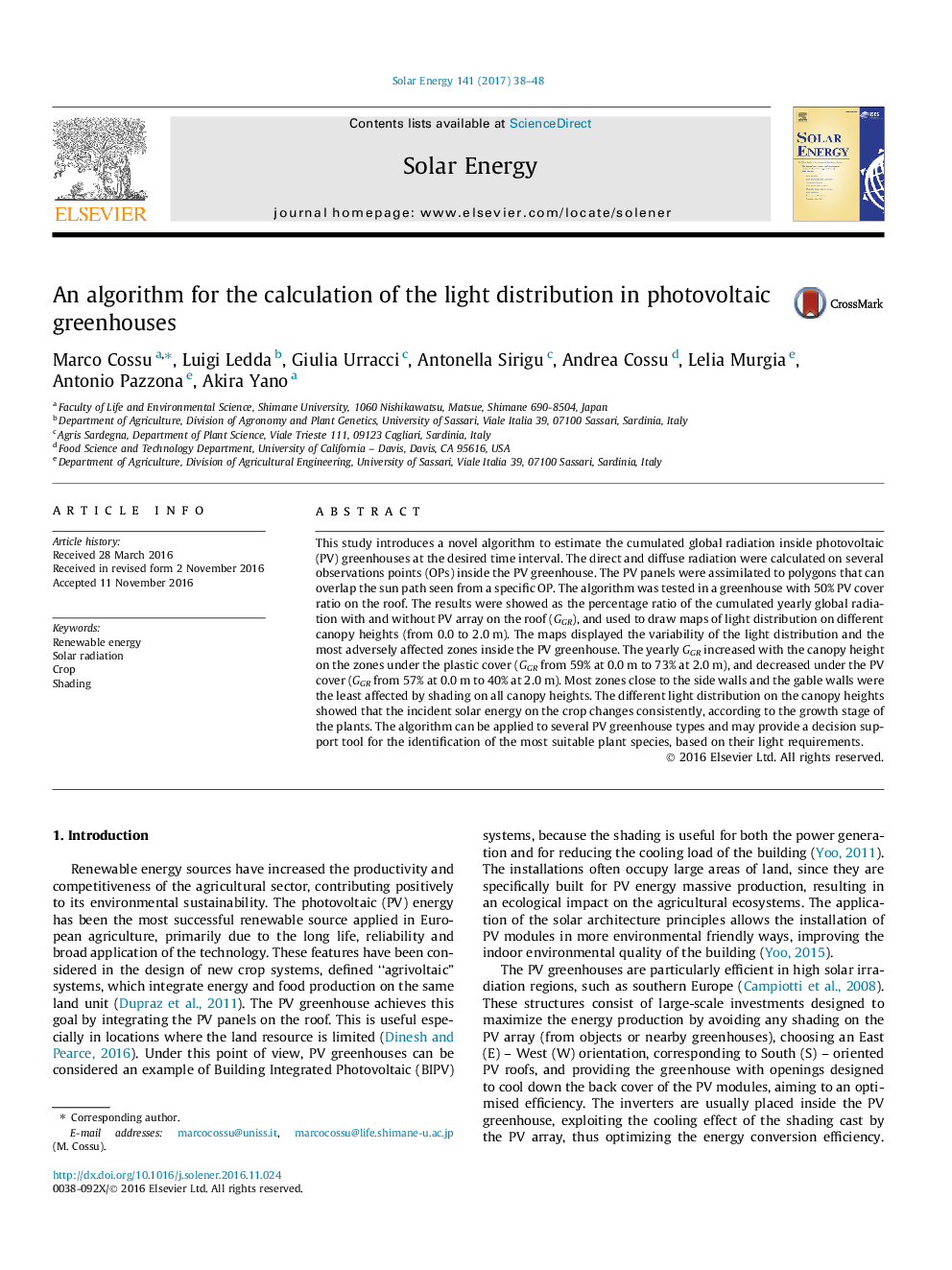| Article ID | Journal | Published Year | Pages | File Type |
|---|---|---|---|---|
| 5451332 | Solar Energy | 2017 | 11 Pages |
Abstract
This study introduces a novel algorithm to estimate the cumulated global radiation inside photovoltaic (PV) greenhouses at the desired time interval. The direct and diffuse radiation were calculated on several observations points (OPs) inside the PV greenhouse. The PV panels were assimilated to polygons that can overlap the sun path seen from a specific OP. The algorithm was tested in a greenhouse with 50% PV cover ratio on the roof. The results were showed as the percentage ratio of the cumulated yearly global radiation with and without PV array on the roof (GGR), and used to draw maps of light distribution on different canopy heights (from 0.0 to 2.0Â m). The maps displayed the variability of the light distribution and the most adversely affected zones inside the PV greenhouse. The yearly GGR increased with the canopy height on the zones under the plastic cover (GGR from 59% at 0.0Â m to 73% at 2.0Â m), and decreased under the PV cover (GGR from 57% at 0.0Â m to 40% at 2.0Â m). Most zones close to the side walls and the gable walls were the least affected by shading on all canopy heights. The different light distribution on the canopy heights showed that the incident solar energy on the crop changes consistently, according to the growth stage of the plants. The algorithm can be applied to several PV greenhouse types and may provide a decision support tool for the identification of the most suitable plant species, based on their light requirements.
Related Topics
Physical Sciences and Engineering
Energy
Renewable Energy, Sustainability and the Environment
Authors
Marco Cossu, Luigi Ledda, Giulia Urracci, Antonella Sirigu, Andrea Cossu, Lelia Murgia, Antonio Pazzona, Akira Yano,
